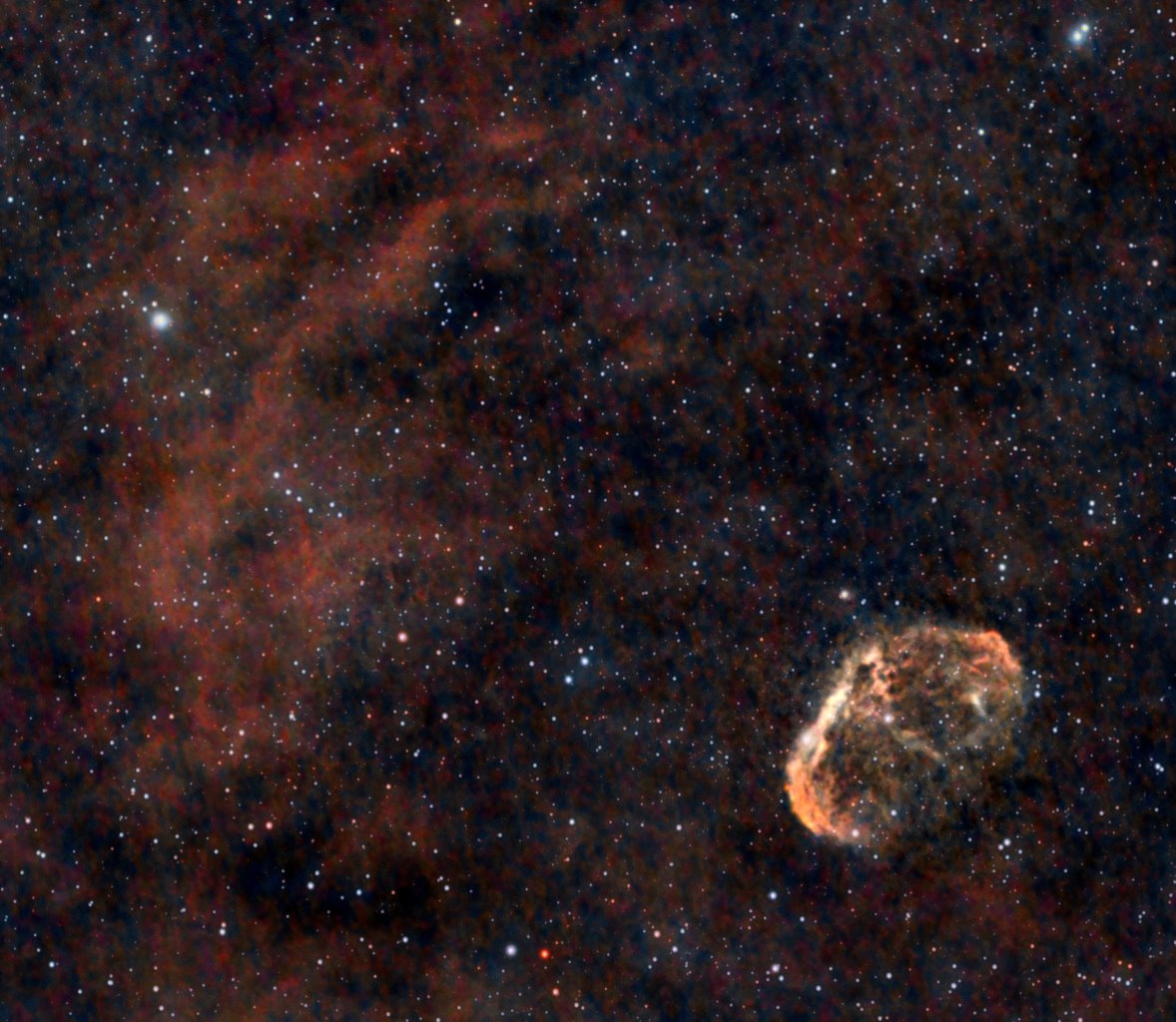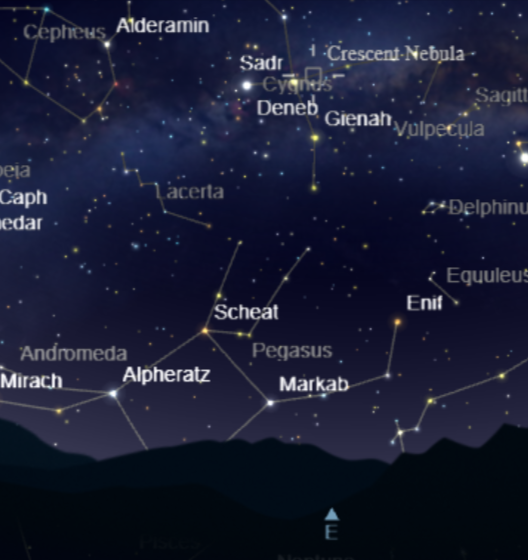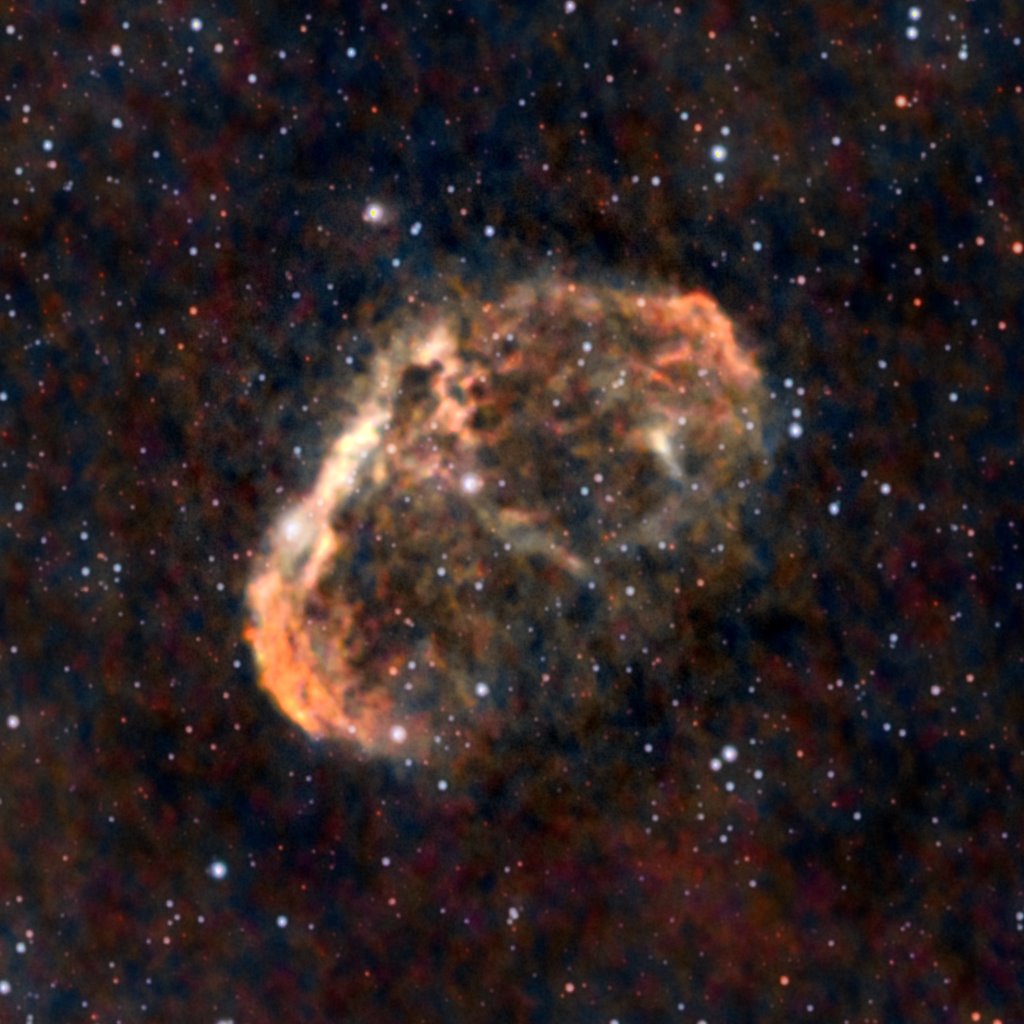Crescent Nebula
Belleville, MI
07/16/25
The Crescent Nebula (NGC 6888) – A Stellar Wind-Blown Bubble in Cygnus
The Crescent Nebula, cataloged as NGC 6888, is a striking emission nebula located in the constellation Cygnus, about 5,000 light-years from Earth. This glowing cosmic crescent is formed by powerful stellar winds from a massive, aging star colliding with gas it shed in an earlier phase of its life. The result is a dramatic bubble of glowing gas, rich in texture and glowing with complex ionization layers—making it one of the most photogenic deep-sky objects in the summer Milky Way.
Distance and Size
- Distance: ~5,000 light-years
- Apparent Size: ~18 x 12 arcminutes
- Actual Size: ~25 light-years across
NGC 6888 is formed by the stellar winds of the massive Wolf-Rayet star WR 136 (HD 192163). A Wolf-Rayet (WR) star is a short-lived, evolved, extremely hot and luminous type of massive star nearing the end of its life. These stars are known for shedding huge amounts of material through strong stellar winds at speeds of up to 2,000 km/s (over 4 million mph). If you refer to the image map, WR 136 is also known as V1770Cyg and is labeled such in the image map.
Here’s what makes the Crescent Nebula unique:
- About 250,000–400,000 years ago, the star shed its outer layers during a red supergiant phase.
- Now, as a Wolf-Rayet star, it emits a fast stellar wind, crashing into the earlier, slower-moving material.
- This creates a shock front, forming a glowing shell of ionized gas, rich in hydrogen (Hα), oxygen ([O III]), and sulfur ([S II]).
- The result is a double shock structure: one moving outward into the older gas, and another moving inward, compressing the newer wind.
The Central Star: WR 136
- Type: WN6 (Wolf-Rayet nitrogen sequence)
- Mass: ~20 times the mass of the Sun
- Luminosity: Over 600,000 times that of the Sun
- Surface Temperature: ~70,000 K
WR 136 is a powerhouse, producing intense ultraviolet radiation that ionizes the surrounding gas. It is rapidly shedding mass and is expected to end its life in a Type Ib or Ic supernova within the next few hundred thousand years. The Crescent Nebula (NGC 6888) is a dramatic example of how massive stars shape and interact with their environments near the end of their lives. Powered by the powerful winds of the Wolf-Rayet star WR 136, this glowing bubble in Cygnus is a stellar wind nebula, filled with turbulent motion, radiant shock waves, and beautiful filaments. At about 5,000 light-years away, NGC 6888 offers a rare and vivid glimpse into the violent and brief final stages of a massive star’s evolution before it ends in a supernova.
Project Details
-
Belleville, MI
-
ZWO FF65 telescope @ fl=416mm f6.4, Pentax K3ii, 4 minute subs, Antlia Triband filter, iso 500, 8h20 minutes integration





